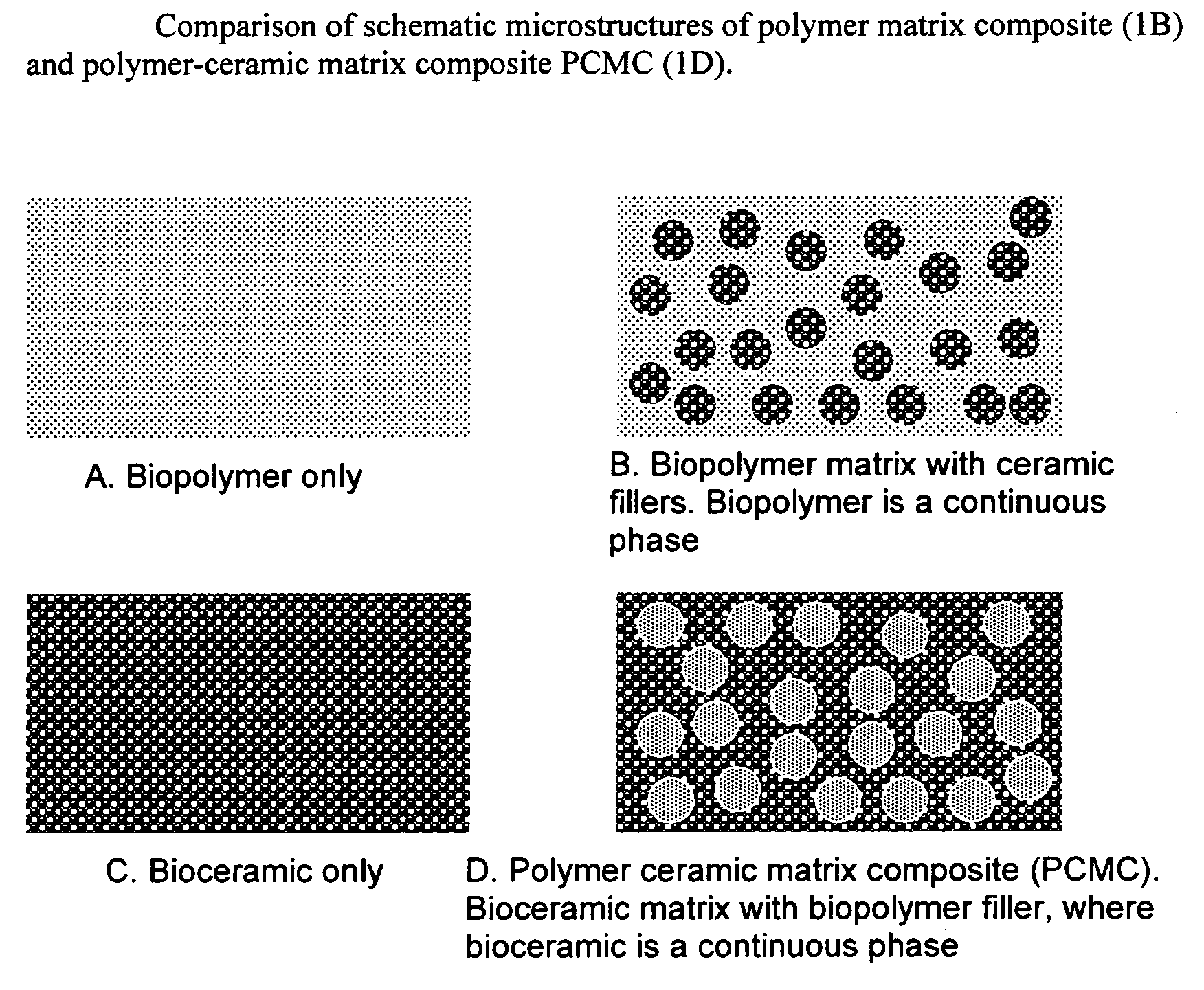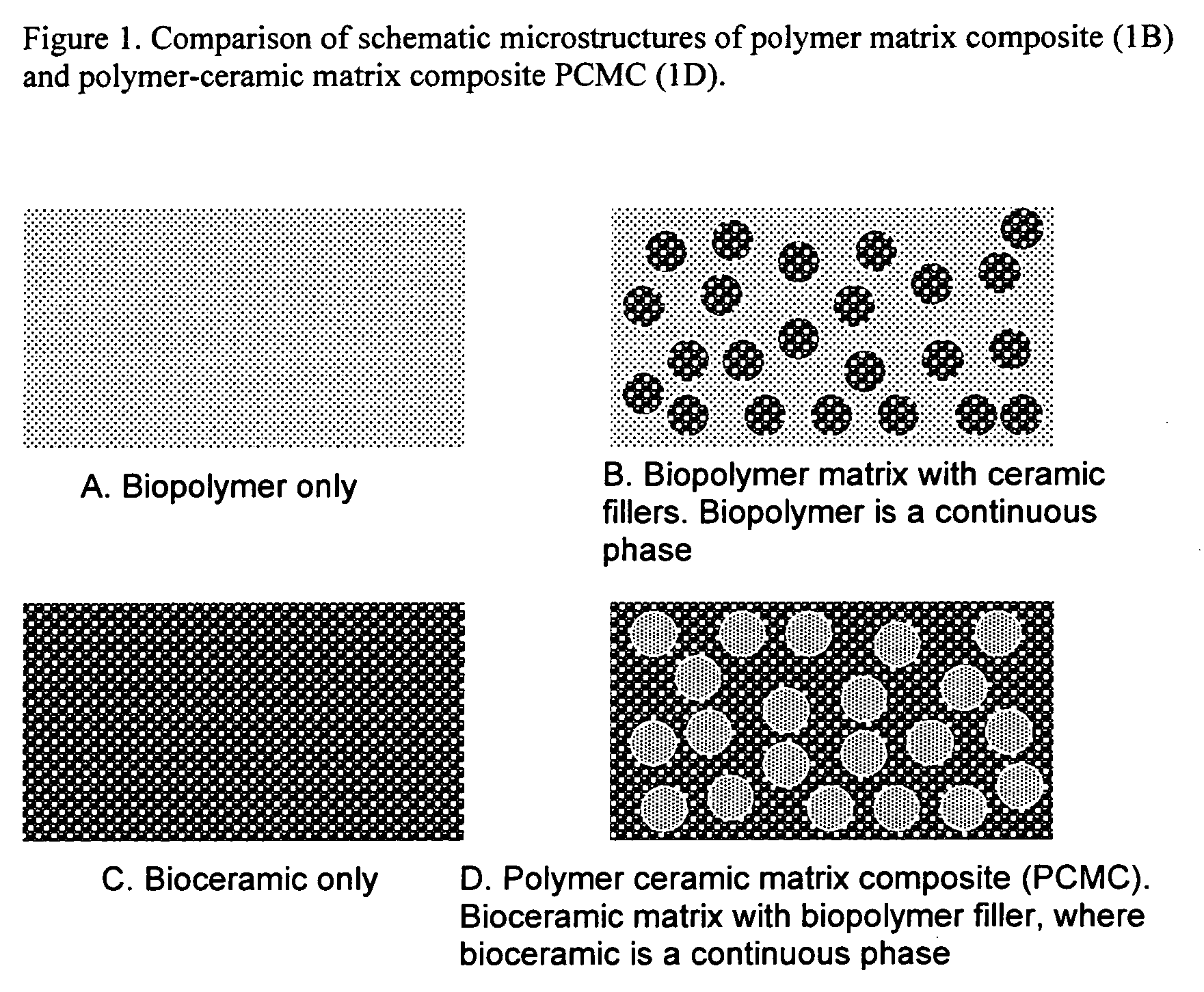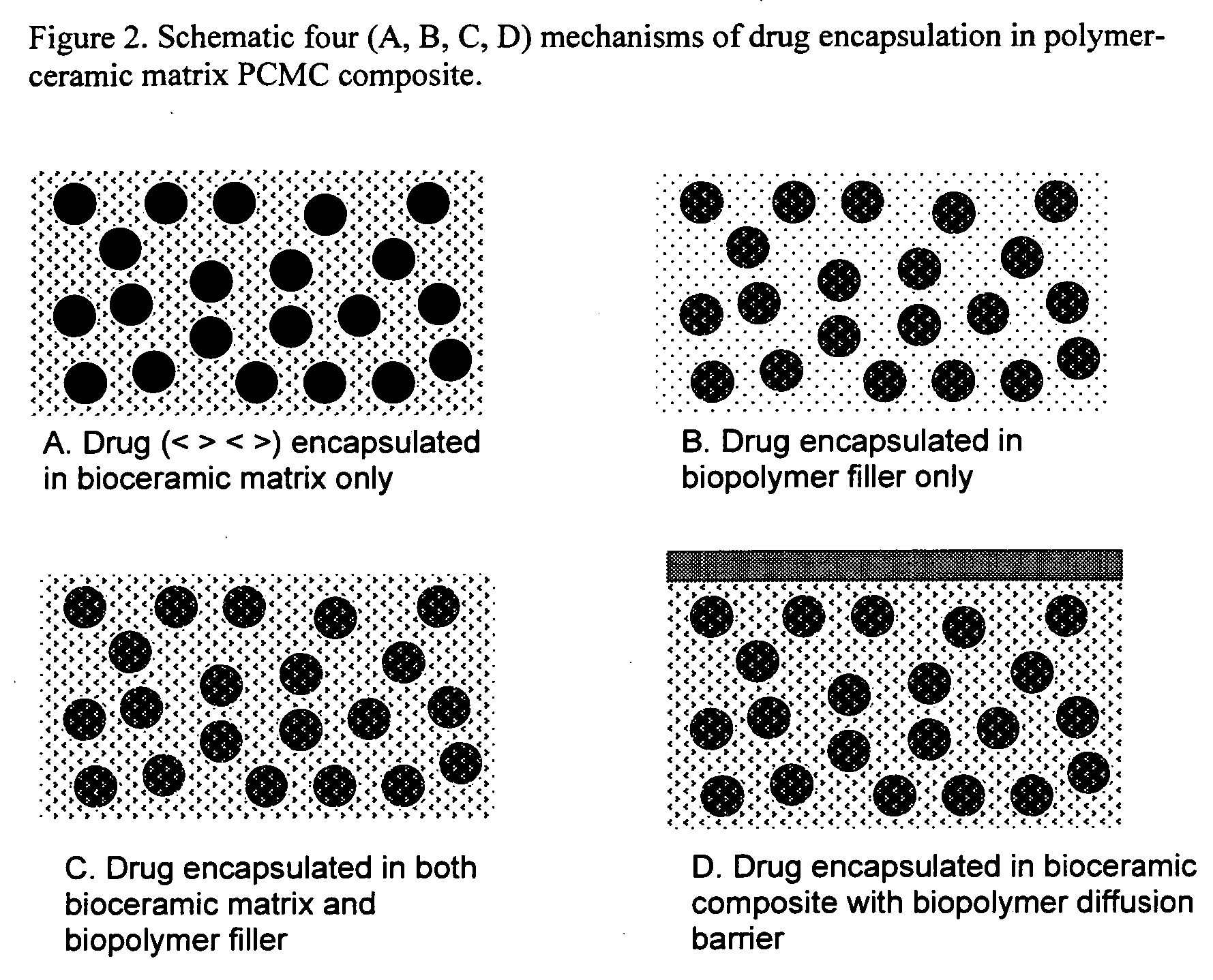Bioceramic composite coatings and process for making same
a bioceramic composite and composite coating technology, applied in the field of new materials, can solve the problems of affecting the development of a strong mechanical interlock between the implant and the prosthesis, deterioration of the whole composite, and notoriously brittleness, and achieve the effect of superior properties
- Summary
- Abstract
- Description
- Claims
- Application Information
AI Technical Summary
Benefits of technology
Problems solved by technology
Method used
Image
Examples
example 1
Poly(lactic acid)—Hydroxyapatite (HAP) Matrix PCMC Composite Coatings by Sol-Gel Processing
[0096] The porous HAP coatings were fabricated through a sol-gel route. There are a number of sol-gel routes to HAP, as disclosed in the scientific and patent literature. In this particular example, the inventors have followed the route disclosed previously by one of the co-authors (TT) in U.S. Pat. No. 6,426,114, issued Jul. 30, 2002, the contents of which are incorporated herein by reference. In this route, as quoted from U.S. Pat. No. 6,426,114, “phosphite sol was hydrolysed in a water-ethanol mixture (a concentration of 3M) in a sealed beaker until the phosphite was completely hydrolysed (which is easily recognized by loss of a characteristic phosphite odour), at ambient environment. A Ca salt (2M) was then dissolved in anhydrous ethanol, and the solution was then rapidly added into the hydrolysed phosphite sol. The sol was left at ambient environment for 8 hours, followed by drying in an...
example 2
Poly(lactic acid)-Drug-Hydroxyapatite (HAP) Matrix PCMC Composite Coatings by Sol-Gel Processing
[0102] The porous HAP coatings were fabricated and deposited on implant surface through sol-gel route, as described in Example 1. The porous sol-gel HAP coating was impregnated by bio-polymer-drug mix through the following route. 1 g of poly (lactic acid) and 0.2 g Rapamycin were co-dissolved into 10 g methylcholine. The porous HAP coatings were impregnated with polymer and drug solution for 4 hours, in which time the solution will have reached all the pores of the coating and interface of substrate and coatings. The extra solution was removed by centrifuge (spin) processing, followed by drying at 37° C. for 60 minutes. This process resulted in deposition of the drug and polymer within the pores of the ceramic matrix. About 20-50 μg of drug can be deposited within the pores of such processed PCMC, per 1 cm2 of the coating. In this particular example, 34 μg of drug was deposited within th...
example 3
Poly(lactic acid)-Drug-Hydroxyapatite (HAP) Matrix PCMC Composite Coatings by Plasma Spray Processing
[0106] Deposition of porous HAP coatings by plasma spraying is well known and documented in literature. We have used one of the standard processing routes to deposit 110 μm thick, 30 vol % porous (including 8 vol % closed porosity and 22 vol % open porosity) HAP coating. The ceramic HAP matrix was a continuous matrix used for impregnation to produce PCMC. The coating was impregnated with drug-biopolymer as described in Example 2. The resulting 110 μm thick PCMC was suitable for implants of relatively simple surface features or pattern, such as hip implants or dental implants, and unsuitable for complex deforming implants such as stents. The coatings were advantageous over the pure ceramic HAP coatings typically used for hip or dental implants because of advantageous (i) biological properties, such as high biocompatibility and no toxic products of bio-degradation; and (ii) drug deliv...
PUM
| Property | Measurement | Unit |
|---|---|---|
| Pore size | aaaaa | aaaaa |
| Pore size | aaaaa | aaaaa |
| Thickness | aaaaa | aaaaa |
Abstract
Description
Claims
Application Information
 Login to View More
Login to View More - R&D
- Intellectual Property
- Life Sciences
- Materials
- Tech Scout
- Unparalleled Data Quality
- Higher Quality Content
- 60% Fewer Hallucinations
Browse by: Latest US Patents, China's latest patents, Technical Efficacy Thesaurus, Application Domain, Technology Topic, Popular Technical Reports.
© 2025 PatSnap. All rights reserved.Legal|Privacy policy|Modern Slavery Act Transparency Statement|Sitemap|About US| Contact US: help@patsnap.com



